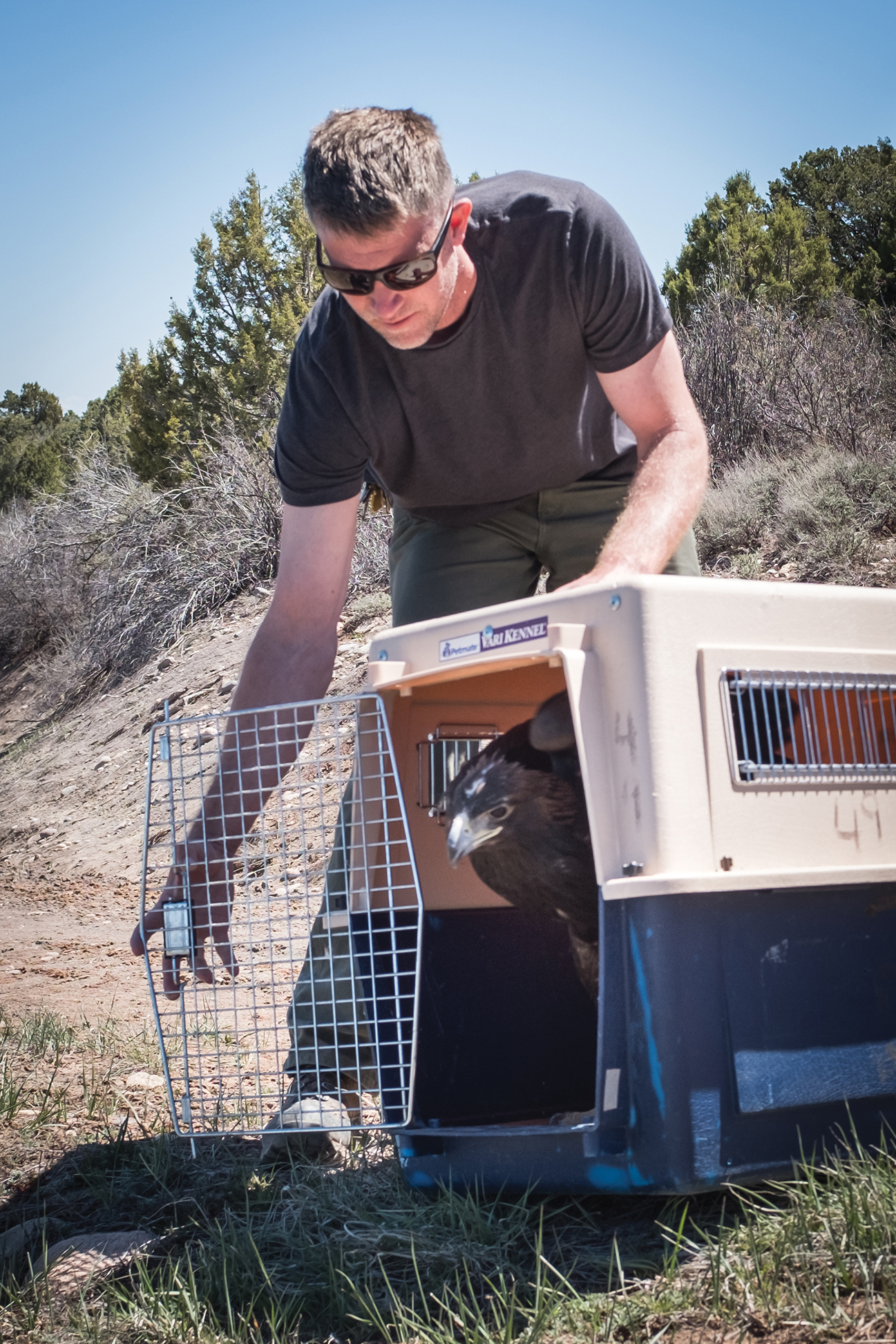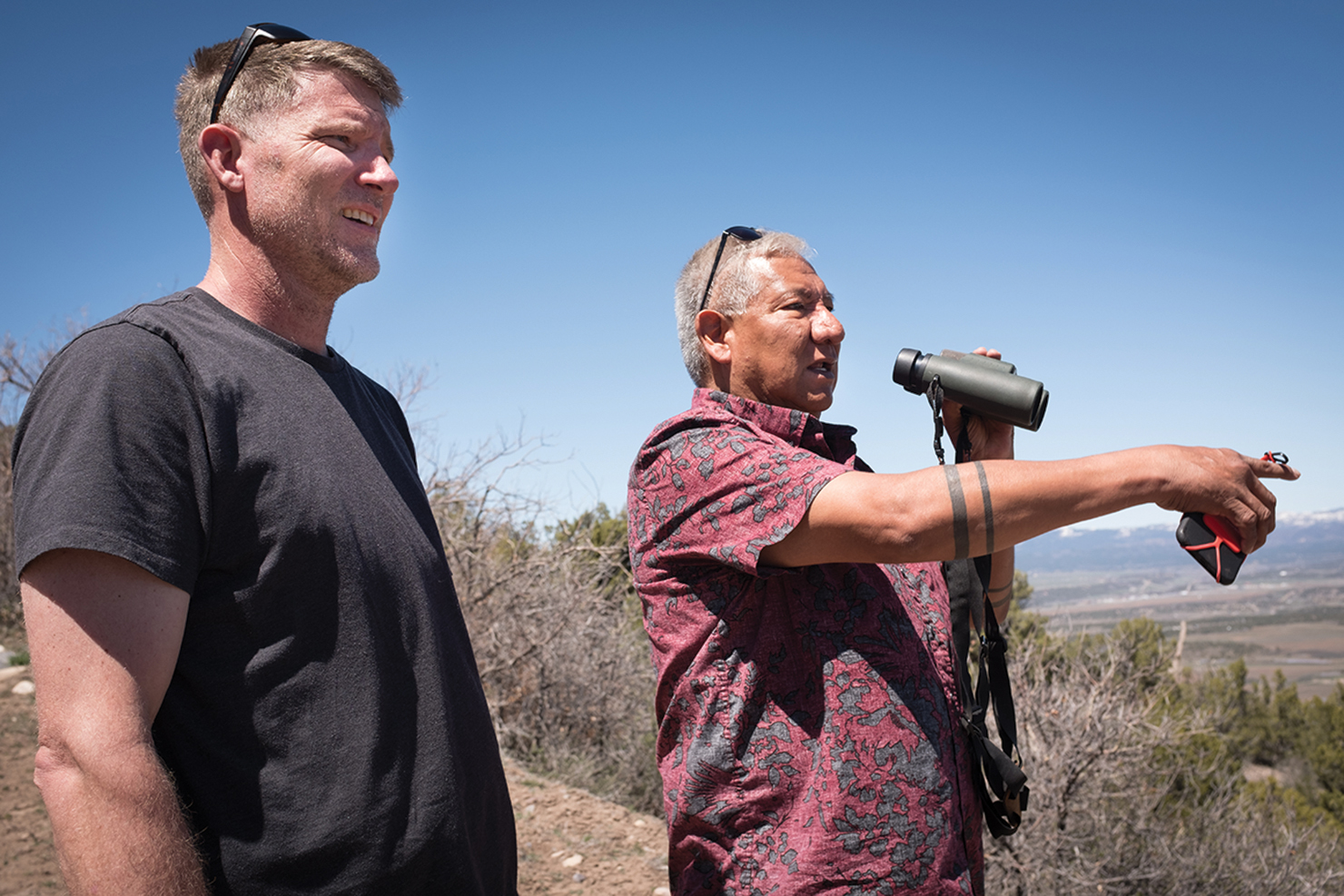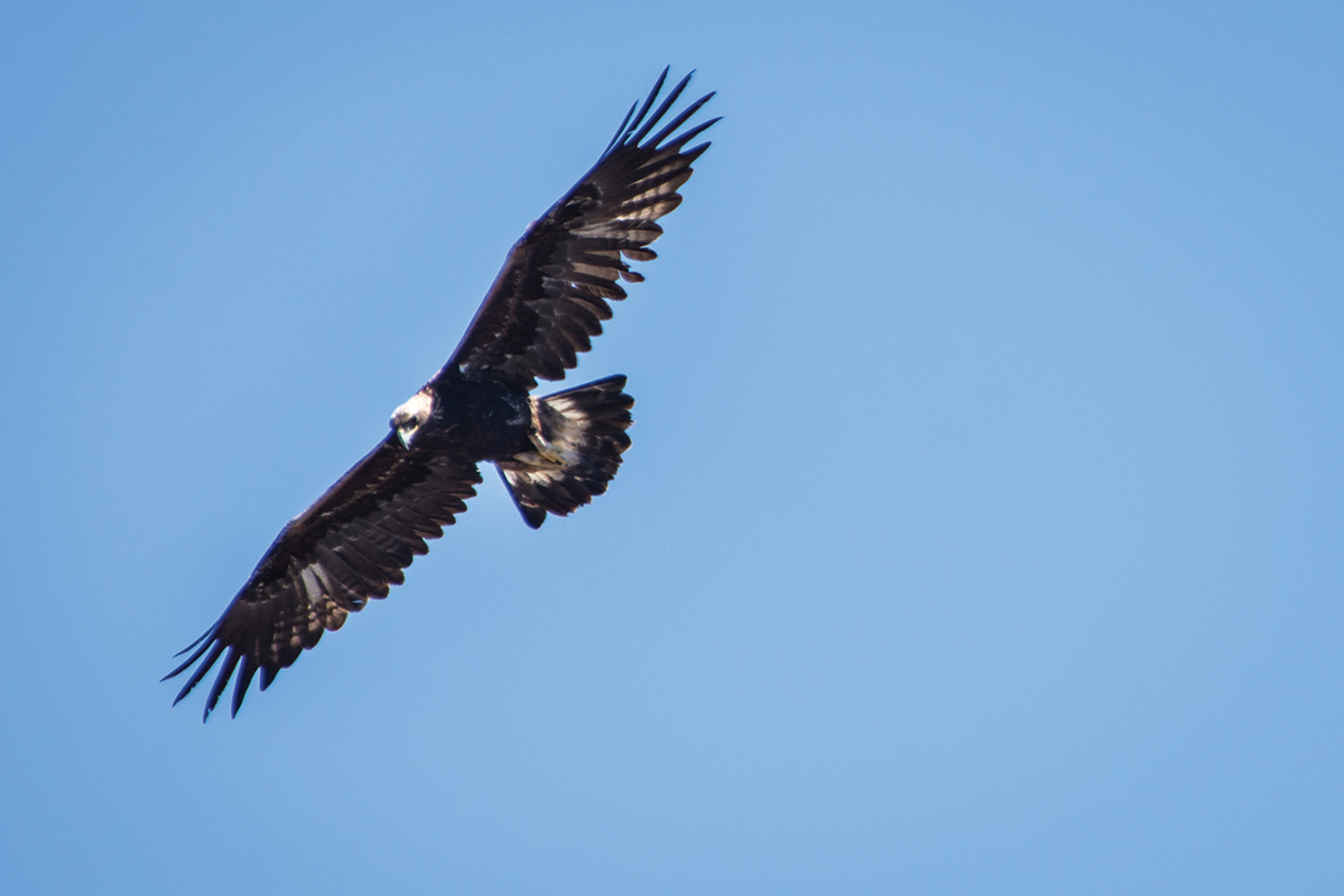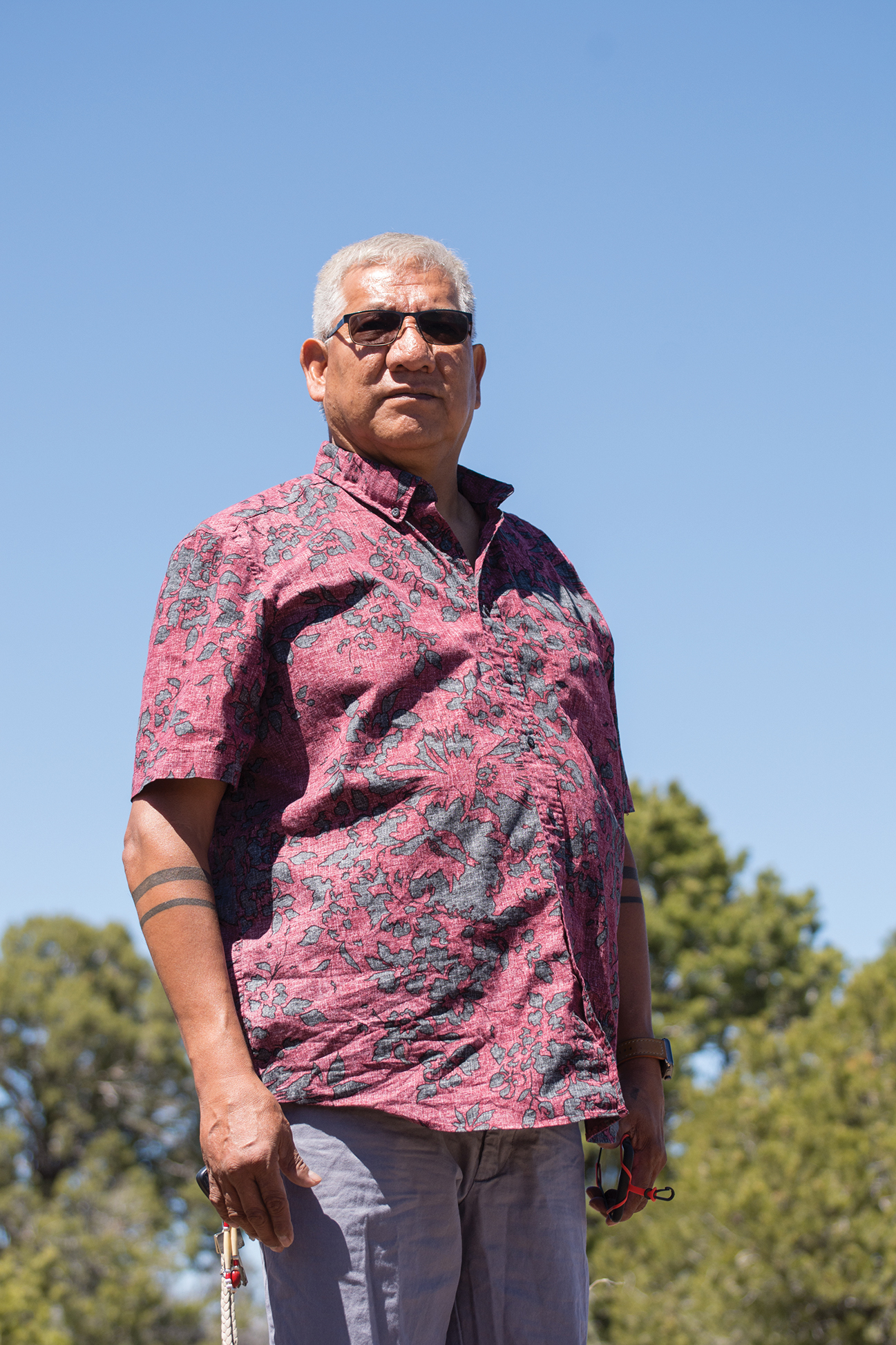On a blue bird Colorado spring day, Southern Ute Cultural Coordinator, Hanley Frost gathered a handful of soft dirt in his palm, and offered a blessing in the four directions; he welcomed a young eagle back home.
The juvenile golden eagle had spent nine months at a rehabilitation center, and was now being released back into the wild, back to the same location where he had been found injured late last year. With those words of encouragement, the raptor wasted no time in spreading its wings and circling to a nearby perch in the wooded canyon below, where it was joined by another eagle of the same age.
“They are a powerful bird; a powerful symbol — but birds in general are fragile, many do not survive after a severe injury,” Southern Ute Wildlife Biologist Aran Johnson explained. “If it can happen that they are able to be returned to the wild, that is ideal.”
The juvenile eagle was returned to the Southern Ute Wildlife Division on Thursday, April 18, and summarily released on Middle Mesa, near the top of Herrera Hill, southwest of Ignacio, that same morning; accompanied by Danielle Austin, Nicole Pearson and Aran Johnson from the Tribe’s Wildlife Division.
Eagles are culturally important animals. “We make a point to contact the Culture Department and arrange for a blessing, a welcome back — good luck on your journey,” Johnson explained. “They return to their anonymity, they return to their life, unmarked. [The goal is] to let them be a wild eagle again,” he said.
This eagle was spotted by a gas field operator in August of last year. Southern Ute Wildlife was notified, and they collected the bird, which was lethargic and unable to fly for any long distances. “There was no outward sign of trauma, it was not a broken wing, or anything obvious,” Johnson remarked. “If we have an injured animal, we take it to the Durango Animal Hospital first, to determine if the animal is fit for rehabilitation.”
The next step involved handing the bird over to the Frisco Creek Wildlife Rehabilitation Center run by Colorado Parks and Wildlife (CPW).
“The bird looked perfectly healthy,” Frisco Creek Wildlife Facility Manger, Michael Sirochman explained. “He was in relatively good shape, a few weeks out of the nest.” We placed him in a 100-foot-long aviary. “He had no desire to fly, he tried to get high, but only by moving up to a higher perch. He was housed alongside another adult eagle.”
Golden eagles reach maturity in four to five years, they can live up to 20-25 years. “He didn’t experience much life before rehab,” Sirochman remarked. It was good that he had another, older eagle to keep him company.
It wasn’t until January that he started to exhibit flight.
“He might have had a soft tissue injury, from a crash,” Sirochman offered. He was well fed over the rehabilitation process, but had very little muscle. CPW staff worked to build his strength and stamina by exercising the bird; they also spent several days providing the young bird with live pray, where he learned to kill rabbits in the large aviary.
“[After nine months] he looked like he would be able to get around and do the things he needed to [in the wild]. Our goal is to be as hands off as possible, so they have the best chance to survive; we try to minimize the contact — even with the raptors,” explained Sirochman. Stating that even then, a bond is built.
The raptor was deemed as fit for reintroduction. The bird was strong, healthy and flying well. The time of the year is important in releasing them back into their natural habitat; mild weather and an ample food supply play a key part in that. “This is a really good partnership with CPW and Frisco Creek, the rehabilitation work they do — it is really something we appreciate,” Johnson emphasized.








